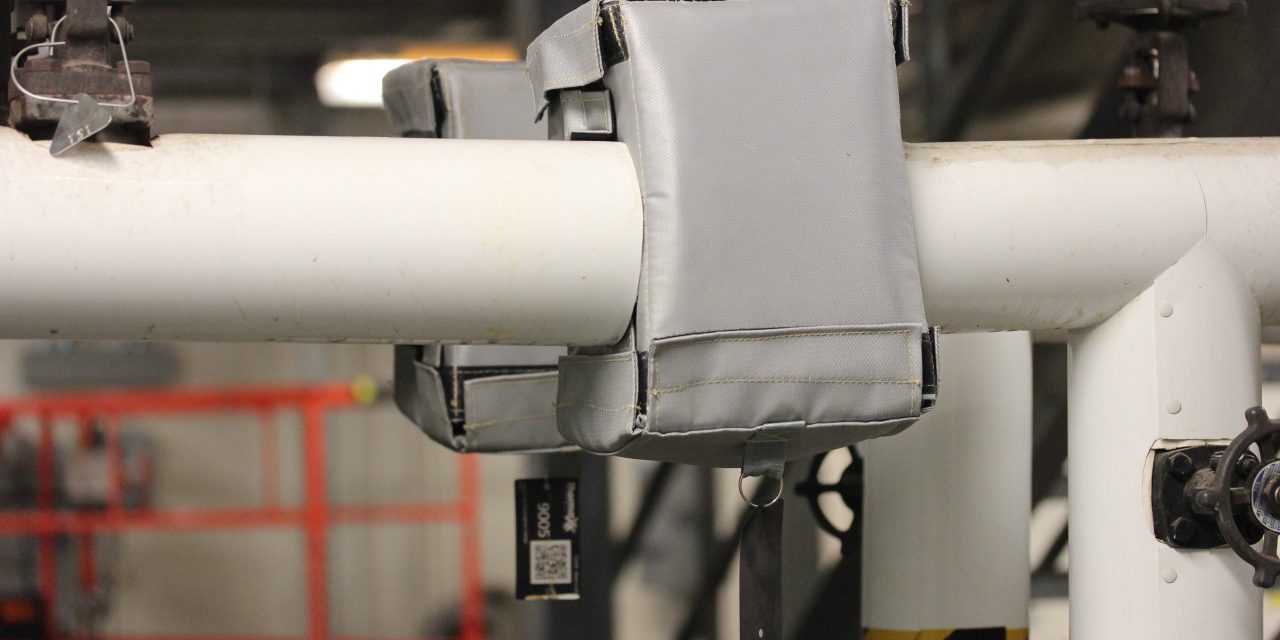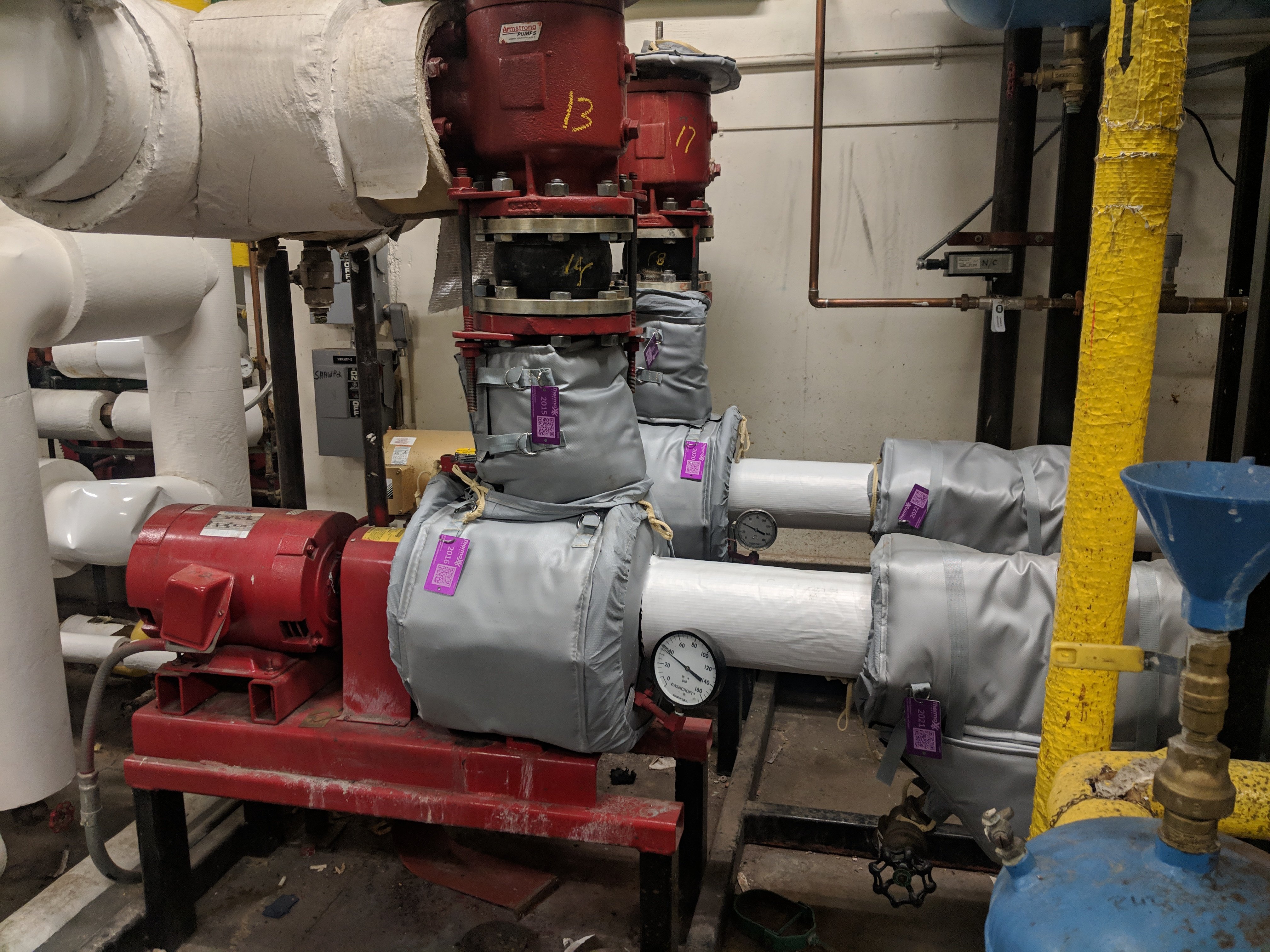A Guide to Heat Trace Pipe Insulation
Pipes and storage tanks are vulnerable to the cold where liquids can freeze and expand, bursting pipes, damaging valves, and slowing down productivity. Heat trace insulation is one method used by numerous industries to heat pipes and prevent freezing. Heat trace cables generate heat when electricity passes through them and can be laid on pipes, tanks, and vessels of varying sizes.
In This Resource:
- What Is Heat Tracing?
- What Insulation is Used for Heat Tracing?
- Where is Heat Tracing Used?
- Does Heat Trace Need to be Insulated?
- Custom Thermal Insulation Blankets From Thermaxx
What Is Heat Tracing in Piping?
Heat tracing is an electrical system used to heat pipes, tanks, and other components. Heat trace cables are lined along piping systems and raise or maintain the temperature of components. As electricity passes through the wires, it generates heat that warms the surroundings.
Some heat trace cables are made from self-regulating polymers that adjust their temperature based on the ambient temperature for a specific component. Others are controlled using a thermostat or temperature sensor. Most heat trace systems have sensors and monitors to track their performance and regulate their temperature.
Heat trace systems are used in cold conditions to prevent pipe systems from freezing. Even in environments where cold is not a concern, heat tracing can help maintain specific temperature requirements to optimize performance and productivity in a system.
It is also important to insulate heat tracing and the components they warm. Insulation ensures no heat is lost to the surrounding environment, lowering energy consumption and maintaining temperatures. One of the most common insulation solutions for heat tracing systems is removable insulation blankets.
What Insulation is Used for Heat Tracing?
If pipes and other components already have insulation jackets, it is still a good idea to add heat trace, especially in extremely cold conditions. Both hard pipe and removable insulation prevent heat loss, but don't provide any additional heat source. In some systems, insulation alone cannot prevent pipes from freezing or losing heat over extended periods, resulting in the system and its contents becoming the same temperature as the surrounding environment.
Though the process is much slower and more gradual than in uninsulated pipes, this gradual heat loss is why is crucial to add heat tracing to insulated systems. Heat tracing provides a source of heat that helps pipes maintain their temperature in extremely cold conditions. A combination of heat tracing and insulation ensure pipes and other components have a consistent source of heat to maintain their temperature and reduce the rate of heat loss.
Heat Tracing Applications: Where is Heat Tracing Used?
Many heat tracing systems are integral to productivity, safety, and temperature requirements. Heat tracing is versatile, so nearly any organization can utilize this technology. Heat tracing protects systems and maintains heat in numerous industries, including:
- Mining
- Food processing
- Power generation
- Manufacturing
- Chemical processing
- Pharmaceuticals
- Education
- Health care
- Municipalities
Four common heat tracing applications include freeze protection, heating and de-icing, cavitation protection, and temperature control.
1. Freeze Protection
The most common application for heat tracing is freeze protection. Heat trace cables can be cut to fit onto nearly any sized pipe or part, making them well-suited for a range of piping systems and other components that need to be heated. With proper insulation, heat trace can also lower energy consumption by preventing heat loss while protecting your pipes.
2. Heating and De-Icing
Installing heat tracing cables on roofs, gutters, walkways, and roads can prevent ice and snow from accumulating. The extra weight from snow and ice can damage the roof and gutter systems, while the overflowing water can damage underlying structures. Heat trace cables also act as draining paths for water from the melted ice and snow to prevent overflowing gutters.
3. Cavitation Protection
Cavitation is when vapor bubbles form in a liquid because static pressure of a liquid reduces to below the liquid's vapor pressure. These cavities can collapse, creating shockwaves that can damage piping systems. The vapor bubbles also slow down and disrupt the flow of liquids through pipes, reducing the system's efficiency.
Heat trace ensures liquids have a consistent temperature, reducing the possibility of rapid pressure changes and limiting the risk of cavitation.
4. Temperature Control
Many industries rely on heat tracing to help maintain specific temperature ranges during production, processing, refining, storage, and extraction. Heat tracing can ensure pipes, tanks, and other vessels retain heat regardless of the exterior temperature or environment. As a result, systems remain at optimal temperatures for liquids or gases to move through safely and quickly, improving productivity.

Does Heat Trace Need to be Insulated?
When installing heat tracing, it is essential to add insulation. An insulation layer has various benefits, including reducing heat loss, improving energy efficiency, enhancing safety, and maintaining system temperatures to optimize performance.
Insulation will cover the pipes or parts and the heat tracing. When both the heat trace and component are protected, less heat is lost, resulting in the use of less energy to maintain a system’s temperature.
Insulating over heat trace also improves safety and can help prevent burns when pipes are insulated. This additional layer of protection is vital for systems where pipes are exposed or require maintenance teams to interact with heated piping regularly.
Installation Best Practices for Heat Trace and Insulation
There are different types of insulation available for heat trace cables, including ceramic, fiberglass, permanent, and removable insulation solutions. Regardless of the type of insulation you choose, you should keep specific installation best practices in mind:
- Plan the installation: Take the time to work with your contractors to plan the heat trace and insulation installation properly. This includes accounting for any equipment downtime needed to install the cables and insulation safely.
- Choose your insulation: There are various insulation materials to choose from and removable and permanent options. Consider the amount of space you have around your pipes, your budget, and how often technicians may need to access components. These critical factors will help you choose the right insulation solution for your application.
- Account for odd shapes: Most piping systems include elbows, valves, bent pipes, and other oddly shaped components that require insulation. Heat trace and insulation can be cut to accommodate these features, though it may take additional time and attention to detail to ensure they are installed correctly.
- Use heat trace properly: Using the wrong heat trace model or too many cables can lead to excessive heating. This extra heat can damage the insulation and the pipes over time. Be sure to have the wattage of your heat trace cables calculated properly to maintain the desired temperature range.
- Look for gaps: Any gaps in the insulation or heat trace cables can impact their effectiveness. Make sure you insulate everything correctly and have sufficient heat trace cables for the system the ensure that they function as intended.
Thermaxx Insulation Blankets
Thermal insulation blankets are well-suited for heat tracing insulation. Insulation blankets can cover all types of pipes, valves, and tanks to reduce energy loss.
Thermaxx offers a wide range of customizable insulation jackets for various uses, including heat tracing insulation. Our thermal insulation blankets are ideal to support heat tracing, as they reduce energy costs, extend equipment life span, improve workplace safety, and enable maintenance and repairs without wasting insulation.
Custom Thermal Insulation Blankets From Thermaxx
For over 25 years, Thermaxx has been helping organizations across the United States improve their energy efficiency and workplace safety by installing thermal insulation blankets. We can create custom jackets to cover all the parts of your system.
All of our thermal insulation blankets are made in the U.S. and have a five-year warranty. Our team will help you develop an insulation solution, beginning with an extensive heat loss survey to identify any problem areas.
Contact us to learn more or request a quote today!

Thermaxx Jackets
Thermaxx Jackets was founded over 25 years ago with a single purpose: to help our clients save energy with removable insulation blankets when traditional stay-in-place insulation is not practical. Our dedication to this purpose has resulted in a long list of customers who have saved money thanks to Thermaxx Jackets! Combining expertise in heat loss, wireless monitoring, insulation design, and several other disciplines, we’ve become the #1 provider and fabricator of removable insulation jackets and covers. The Thermaxx Sales and Service teams are experienced and trained to provide clients with the most timely and cost-effective solution.
Categories
- removable insulation
- thermaxx jackets
- energy savings
- savings
- energy efficiency
- safety
- pipe insulation
- energy
- case study
- insulation materials
- thermal insulation
- heat loss survey
- heat loss
- energy loss
- hot insulation
- fiberglass
- installation
- steam
- New York
- custom insulation
- NYC Case Study
- boiler
- university
- Connecticut
- reusable insulation









